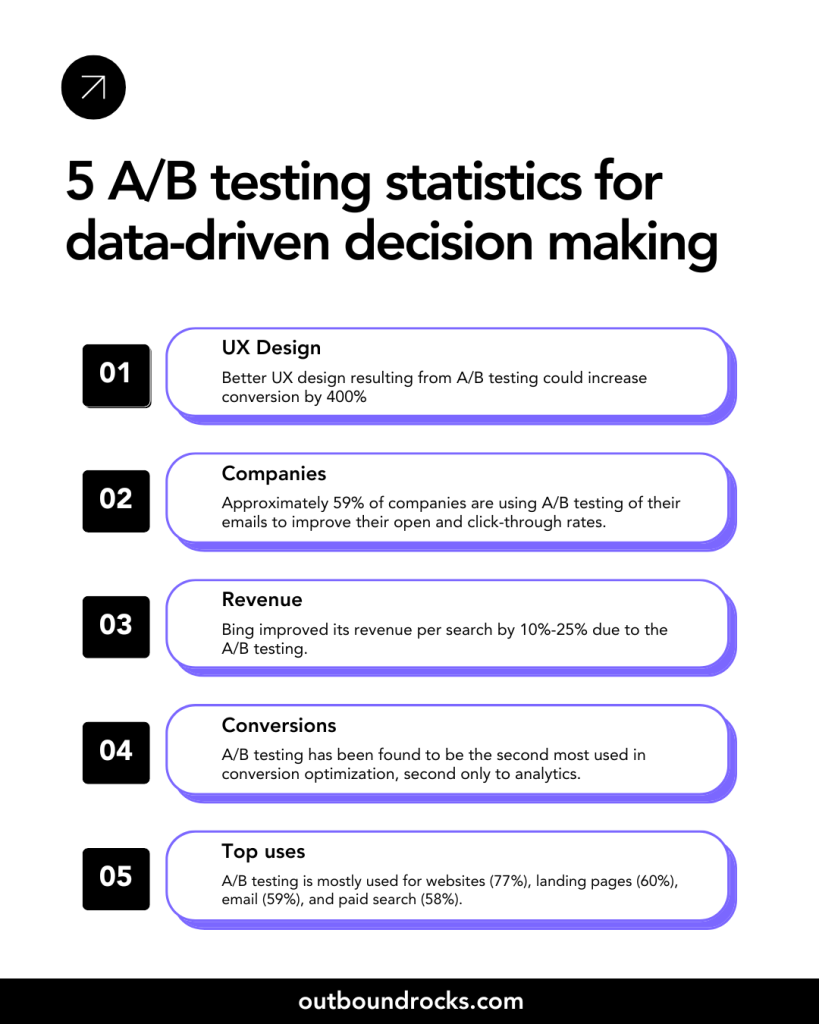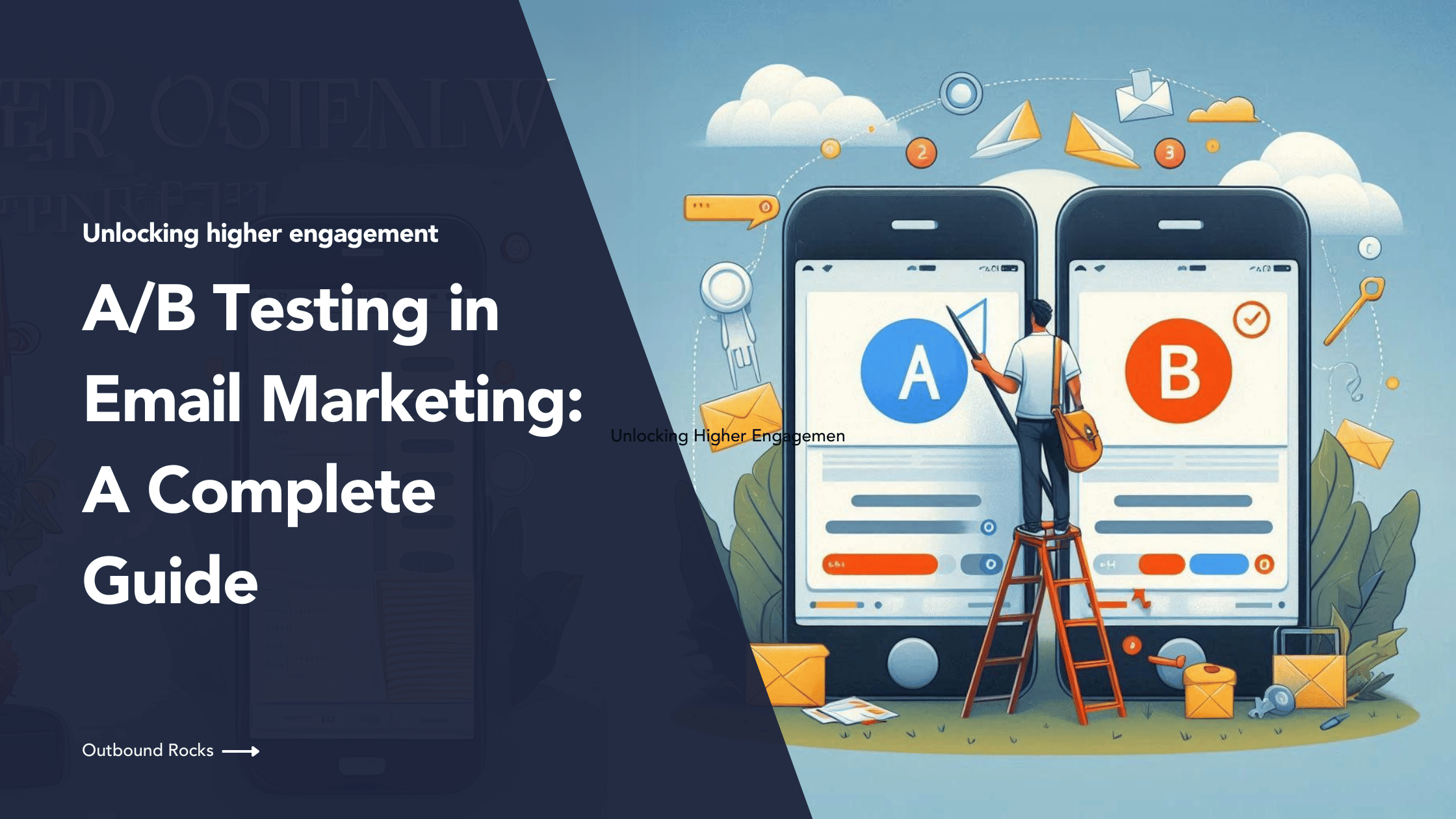Unlock the full potential of your email marketing campaigns with A/B testing, a powerful method that allows you to compare different versions of your emails to see which performs better.
In this article, we’ll take you through the basics of A/B testing, from what it means to the practical steps you need to follow for effective execution.
Whether you’re new to A/B testing or looking to optimize your current approach, you’ll find valuable insights to improve your email marketing efforts.
Read on and get ready to transform your email campaigns with data-driven decisions that strengthen your connection with your audience and achieve your marketing goals.
TABLE OF CONTENTS
– What is AB testing?
– Why is A/B testing important in email marketing?
– 10 Key elements to test in A/B email campaigns
– Conclusions
What is A/B testing?
A/B testing, also known as split testing, is a method of comparing two versions of an email to see which performs better.
The process involves sending version A to a subset of your audience and version B to another subset, with all other variables held constant.
By analysing metrics such as open rates, click-through rates and conversions, you can determine which version resonates better with your audience.
This data-driven approach helps marketers make informed decisions about which elements of their emails are most effective.
Why is A/B testing important in email marketing?
A/B testing is essential in email marketing because it enables you to optimize your campaigns for better performance and higher engagement. According to a Mailmodo report, approximately 59% of companies conduct email A/B testing.
By systematically testing different elements of your emails—such as subject lines, call-to-action buttons, images, and copy—you can gain valuable insights into what your audience prefers.
This leads to more personalised and relevant content, which significantly improves your metrics such as open, click and conversion rates.
Ultimately, A/B testing helps you maximize the ROI of your email marketing efforts by ensuring you send the most effective messages to your subscribers.

10 Key elements to test in A/B email campaigns
A/B testing is an invaluable tool for email marketers looking to refine their campaigns and achieve better results.
Here are 10 key elements to consider when using A/B testing in your email campaigns:
1. Subject lines
The subject line is one of the most visible elements of your email and has a huge impact on open rates. Test different phrases, tones and structures to see which subject lines drive more opens.
For example, you could experiment with questions versus statements, or urgency versus curiosity.
2. Length
The ideal length for a subject line can vary. While some studies suggest that 61-70 characters work best, it’s important to test different lengths to see what resonates with your audience.
In general, shorter subject lines may be more effective for mobile users, while longer subject lines may convey more information.
3. Word order
The order of the words in your subject line can affect its effectiveness. For example, front-loading the main benefit can make it more compelling.
Compare different word orders to see which leads to higher open rates.
4. Content
If your email contains multiple pieces of content, test which piece should be highlighted in the subject line. This can help you determine what type of content your audience finds most engaging and relevant.
5. Personalise
Personalising your subject lines by including the recipient’s name or other personal details can significantly increase open rates.
Test personalised versus non-personalised subject lines to measure the impact on engagement.
6. Visuals
Visual elements can make your emails more engaging. Test whether including images helps to convey your message more effectively and drive higher click-through rates.
Also consider testing the types of images used, such as product photos versus lifestyle images.
7. Images or no images
While images can enhance an email, they can also distract from the message. Test emails with and without images to see which performs better.
Some audiences may respond better to text-only emails, especially if images slow down download times.
8. Style
The style of the visuals can influence how your email is perceived. Compare different styles, such as illustrations versus photographs, or modern versus traditional designs, to see which resonates more with your audience.
9. Copy
The effectiveness of your email copy is crucial, especially given the short attention spans of readers.
Test different tones, messaging strategies and calls to action to see which copy drives the most engagement and conversions.
10. Length
The length of your email copy can affect reader engagement. With shorter attention spans, concise copy may be more effective, but complex products may require longer, more detailed descriptions.
Test short and long copy to find the optimal length for your audience.
Conclusions
A/B testing is a powerful strategy that allows you to create multiple versions of an email template in one step to determine which message resonates more with prospects.
By identifying the most effective elements, you can increase engagement, resulting in higher open and click-through rates.
Ready to take your outbound campaigns to the next level? Try our free demo today and discover how Outbound Rocks can help you optimize your sales funnel and connect with your ideal prospects.
